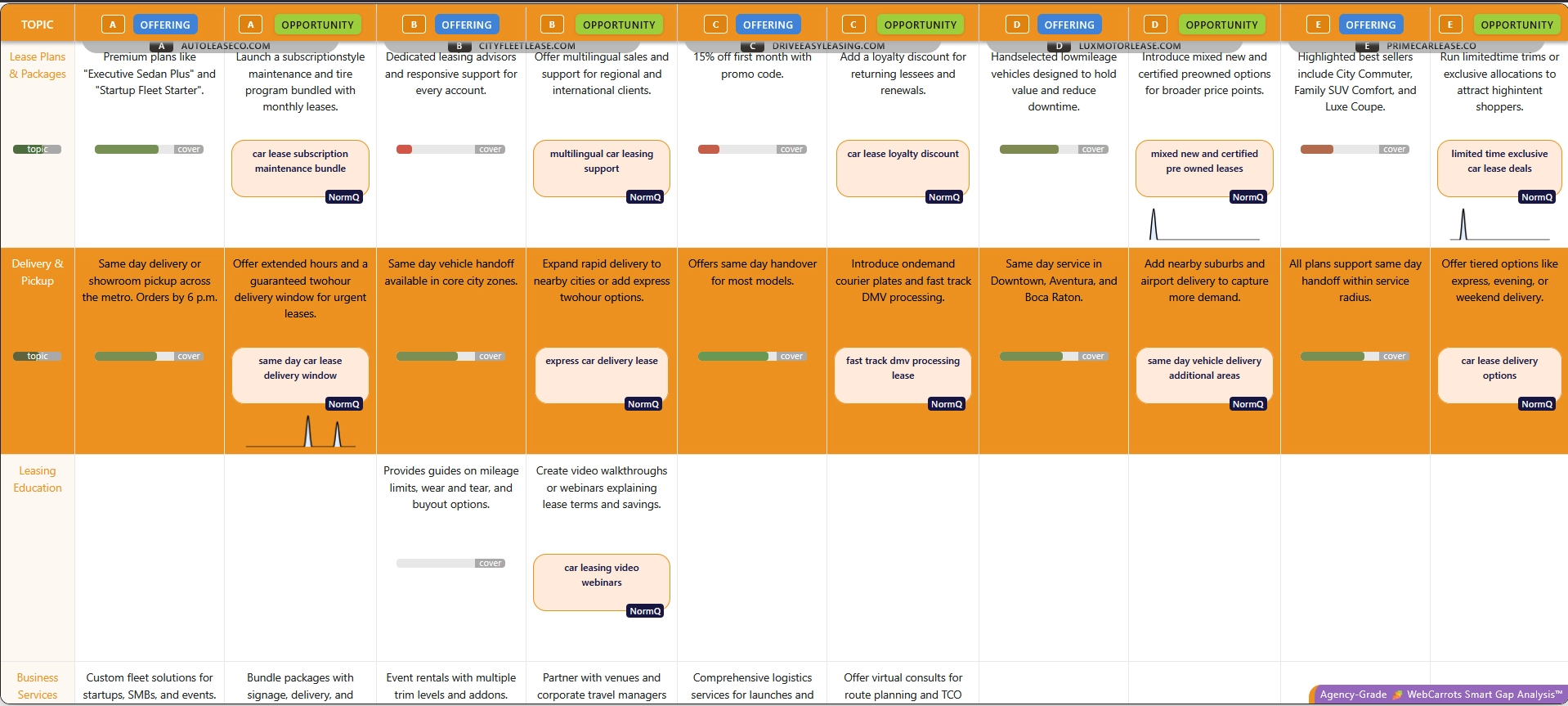Deep GEO with Agency-Grade

LLM (e.g. chatGPT etc.) data is private and API outputs don’t always match in-app results, so “AI visibility” tools are only directional. Manually check 3–5 high-value terms in the actual apps, log competitors and cited sources, then using WebCarrots’s Next Generation Enterprise Premium & Agency-Grade close your content gaps to boost visibility and conversions.

GEO facts & Agency Grade Solution
Directional Insights vs. Real Data
There is no public or internal access to OpenAI’s database of user prompts and results. This means no system can truly see what users are asking ChatGPT, what websites are cited, or which pages are shown as results.
Any company claiming to have “historical visibility data” from ChatGPT or similar LLMs is most likely not pulling that data from the source — they’re simulating, estimating, or storing their own prompts over time. Such tools offer directional insights, not precise, verified visibility.
Why Most LLMs' Historical Visibility Tracking Is Impossible
The only way to have historical visibility data is if prompts were sent during that time, and both citing sources and resulting sites were saved manually or by a custom system. Otherwise, no retrospective access exists — OpenAI doesn’t share prompt logs as Google does with search queries.
Google’s Search Console provides query-level transparency because it’s a public search engine. ChatGPT, however, operates privately — its internal query data is not exposed.
Realistic Visibility Testing
The only accurate way to test visibility is by manually searching your terms in ChatGPT’s web or mobile app and reviewing the live output. Even closely identical prompts can return different results over time due to model updates, retrieval changes, and context evolution.
Using Directional Tools Wisely
SEO & AI visibility platforms can be helpful for directional trend analysis, but they’re not 100% accurate. You can use them to identify patterns and opportunities — not definitive rankings.
The Best-Practice Empirical Method
- List the key prompts customers would use to find your product.
- Run each prompt manually in ChatGPT.
- Save the results:
- Target websites (competitors or your own). Important! use full path URL (not just the domain),
- Citing/source sites (e.g., Yelp, Google Maps, Wikipedia).
- Repeat monthly to capture trends.
Building Your Insight Table
Organize your findings into three columns:
- Prompt / Search Term
- Citing/Sources Sites
- Visible Websites
Then analyze your list — identify sources that frequently cite competitors and study how they appear there. Replicate and improve those placements.
Ranking and Prioritization
- Compile all URLs appearing in ChatGPT results.
- Flag repeated URLs across multiple prompts — those are high-visibility competitors.
- Focus on the top 5 domains first, then the next tiers of 5.
- Record key directories like Yelp or Google Business that frequently appear.
Closing the Visibility Gap
- Run a content gap analysis then Competitive comparison and finally comparing your site to competitors.
- Our system will deliver topics, opportunities, and action items for optimization.
- Tip! Focus on shared topics among competitors — they’re strong AI relevance signals.
Expand content coverage, strengthen authority, and add supporting references and fresh insights with our Trust Tool.
Implementation and Tracking
- Manage gpas and strategy tasks in Project Management.
- Assign owners, set deadlines, and update using Notes in Project Hub.
- Re-run ChatGPT tests to track visibility shifts and new entrants. Update list of competitors.